- Author Jason Gerald [email protected].
- Public 2023-12-16 10:50.
- Last modified 2025-01-23 12:04.
There are times when you have to pick up your dog, such as when you're about to put him in the car or lift him onto a table for a vet check. If your dog is injured, you may even have to pick him up to take him to the veterinary hospital. Learn about safe ways to lift your dog. The following steps will help anyone feel safe and calm when picking up a dog.
Step
Method 1 of 2: Preparing to Lift the Dog
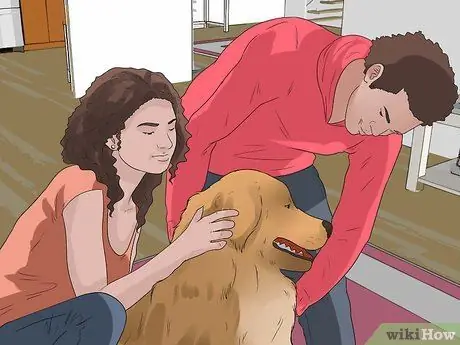
Step 1. Ask for help if your dog is heavy
Most people are not able to lift a dog that weighs more than 18 kg, because everyone has a limited ability to lift weights. So consider the safety of you and your dog when you decide to lift him.
Animals will struggle if they feel like they are going to fall because you didn't lift them properly or because you touched certain body parts they didn't like
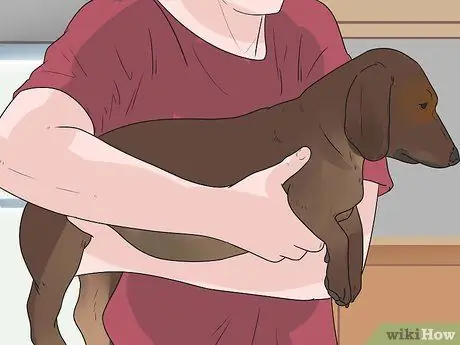
Step 2. Lift the small dog properly
Even if your dog weighs less than 9 kg, you should lift it with care. Help your dog when you are about to pick him up. Use your right hand to hold the neck or chain. This is a good way to prevent your dog from escaping while at the same time controlling the movement of his head. Use your left hand to wrap your arms around the top of the dog's back to the bottom of his chest, then lift him up.
Carry your dog under the left arm or under the armpit to reduce movement
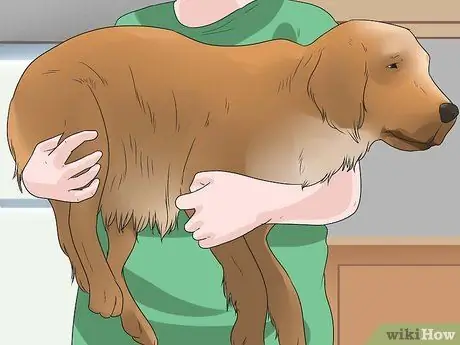
Step 3. Lift the heavier dog carefully
If your dog weighs more than 9 kg, lift your dog with one hand under his neck, with the other hand wrapped around the buttocks. Simultaneously, lift your dog as you would a plank. For dogs that weigh more than 18 kg, ask someone else to lift them. One person should be on the dog's head, placing each hand under the dog's neck and chest. While another person must place one hand under the dog's stomach while the other hand embraces the dog's buttocks. Then lift them together.
The person at your dog's head must count and give the cue to lift your dog at the same time. For example, you can count one to three, and pick up your dog on a count of 3
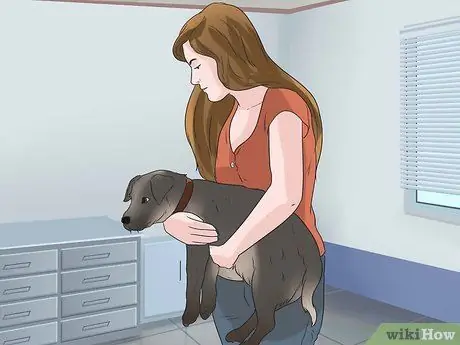
Step 4. Learn how to lift a dog in certain situations
For dogs who are pregnant, who certainly have a distended stomach, avoid the dog's stomach. Or if you think your dog has a back injury, make sure that his back is kept properly straight when you lift his neck and buttocks.
Seek help from others. This will make everyone feel safe
Method 2 of 2: Lifting Your Dog
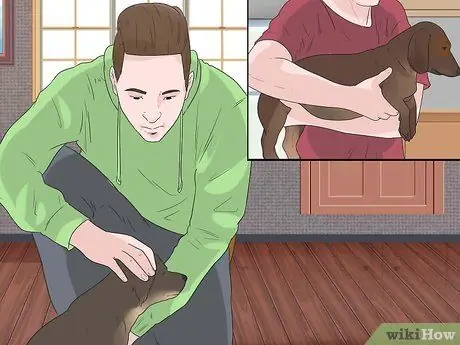
Step 1. Make sure your body is in the correct position when lifting your dog
Don't forget to squat down and lift it up with your feet. Don't bend over to get into the dog's position, to avoid back pain. Place your arms around your dog and lift them up carefully.
Bend knees (crouching) can bring you closer to your dog's position, so you no longer have to bend down to get closer, as this position can often scare the dog
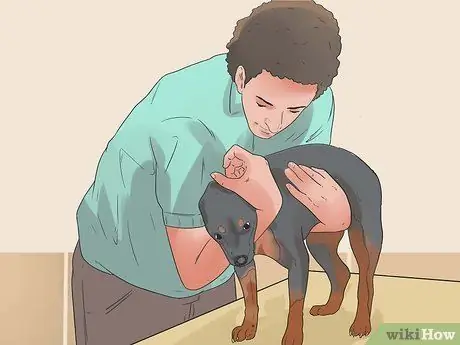
Step 2. Pick up your dog when he is calm
Avoid picking up your dog when he is running and moving around. You may need to teach your dog to calm down.
Plan a routine and start a short training session. Start by telling your dog to sit for a few minutes. Gradually, teach to lie down. Practice these methods in your spare time
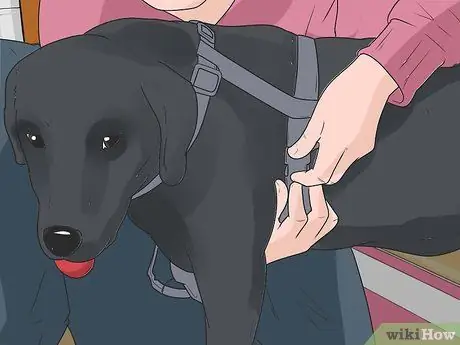
Step 3. Use a towel or short rope
If you have to lift a dog that won't stop moving, use a leash/short chain to control it. Or vice versa you can use a towel on his head and use it to control the movement of his body.
If your dog is seriously injured, protect yourself by squeezing the dog's mouth (with a dog silencer or using a leash to tie the muzzle). At a minimum you should use a towel to cover his head before you lift him up
Tips
- Try to use a blanket or towel as a stretcher. Everyone who lifts your dog, in either the front or rear position, should use this method. Wrap your dog in a blanket/towel so your dog doesn't try to get out of the carrier.
- You may prefer to put your dog in a laundry basket or large plastic storage bag lined with towels. This will prevent additional injuries when you take him to the vet.
- Protect your face. Some dogs may be able to rebel by moving their heads. Keep your face away from the dog, so you don't hit his head or teeth. Use a neck chain to regulate the movement of the smaller dog's neck when lifting it.






